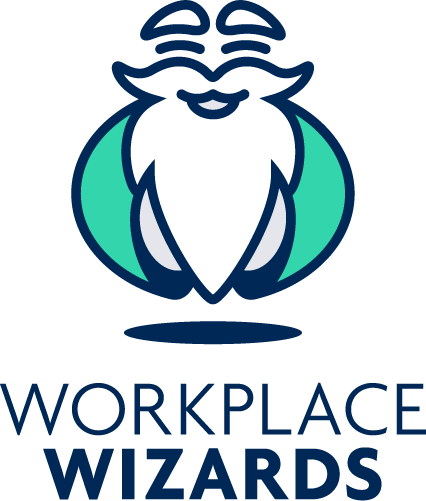The Occupational Health and Safety Act 2004 (Vic) (‘OHS Act’) is the primary source of workplace health and safety law in Victoria. The Act came about as a result of a major review of the previous 1985 Act. This review found the legislation needed to be modernised to reflect the changing nature of workplace arrangements throughout Victoria.
What does the Act do?
The OHS Act fosters increased participation by employers and employees alike in managing workplace health and safety issues.
Ultimately, it sets out the mandatory health and safety obligations and expected outcomes that are required
in all Victorian workplaces, and specifies the roles and powersof various persons/entities authorised to enforce the Act.
The primary objective of the OHS Act is to ensure those with authority over particular aspects of the working environment exercise their power in a manner that is not harmful to the health and safety of any person at the workplace.
In 2017, the Occupational Health and Safety Regulations 2017 (“OHS Regulations”) were enacted to provide further guidance for employers regarding their obligations under the OHS Act and assist employers to identify specific hazards and concerns, particularly in dangerous industries such as construction and mining.
The OHS Regulations are also useful for employees to understand their rights at work, and are often relied upon in claims of negligence and breach of the OHS Act. In 2015, the OHS Regulations were relied upon in an appeal to the High Court by a primary school teacher, who suffered a fall because she frequently moved large pinned-up sheets in a classroom (with the use of a small ladder) on her own.
In this case, the appeal was successful because such a task would meet the description of hazardous manual handling in the OHS Regulations. As a result, it was found the employee had a claim under the OHS Regulations against her
employer for the employer’s failure to identify this hazard and control the risk it posed to its employees.
Who is responsible for OH&S in the Workplace under the OHS Act?
All businesses must comply with health and safety laws, no matter how small. Primarily, employers have the main duties for health and safety in a business, and are required to take the right precautions to reduce the risk of workplace dangers and provide a safe workplace.
Duties of employers
| Duty of care (s20–21 OH&S Act) | Employers are required to provide and maintain a workplace that is safe and without risks to health, so far as it reasonably practicable for them to do so |
| Duty to monitor (s22) | An employer must monitor the health and conditions of employees, ensuring that health and safety information is conveyed to all staff members and records are kept of conditions and complaints |
| Duty to the public (s23) | An employer must also ensure any external persons are not exposed to health and safety risks resulting from the conduct of the business or from the employer. |
Duties of employees
| Duty to take reasonable care (s25) | Employees are obliged to take reasonable care of their own health and safety, or that of anyone else their work conduct may affect. |
| Duty to cooperate (s25) | Employees must cooperate with any OH&S requirement instigated by their employer. |
The OHS Act also imposes specific duties on a number of other personnel, including self-employed persons, designers of buildings used as workplaces, and manufactures of equipment and substances use in workplaces.
How to go about complying with the OHS Act?
- Decide who will help you with your duties – appoint someone who is competent to assist you in meeting your obligations under the OHS Act. Someone with relevant skills, knowledge and experience in managing
health and safety is advisable, and you may even opt for expert advice from
outside the business. - Involve your workers – it is important to consult with your working to gauge the health and safety matters that directly affect them, as research shows effective consultation leads to better health and safety outcomes. Setting up a safety committee within the business is always a good start.
- Provide information, instruction, training and supervision – ensure your staff has access to your OHS policies, which should describe how you intend to manage health and safety in your business, and outline who is responsible for certain outcomes and when/how these will be achieved. This information should be easy to understand, regularly reviewed and continuously reiterated to all staff (including contractors).
- Identify hazards, and plan for emergencies – It is not possible to eliminate all hazards in your workplace, therefore it’s important to identify which hazards require the most urgent attention and identify sensible ways to control the risk. Making relevant plans and arrangements in the event of an emergency is crucial, and establishing a Register of Incidents and Injuries, as well as taking out Workers Compensation Insurance, may assist
in minimising costs in the unlikely case of an OH&S incident.
Conclusion
The OHS Act (and associated OHS Regulations) impose clear and achievable obligations on employers and employees alike, and ideally work to ensure that all Victorian workplaces are safe and employees enjoy a high standard of health and wellbeing at work. Ultimately, it is the employer’s responsibility to understand the rights
and obligations it has under the OHS Act, and ensuring it meets these requirements.
Need Specialist Help?
Our experts at Workplace Wizards can review your existing OHS policy to ensure your arrangements meet minimum statutory standards as well as the specific requirements of your business. We are also able to provide
Codes of Conduct and company policies to protect your company from health and safety-related incidents and costs.
Should you require any please contact our team on 03 9087 6949 or email support@workplacewizards.com.au for a chat.



0 Comments Leave a comment
Comments are closed.